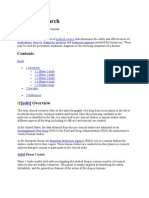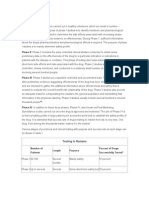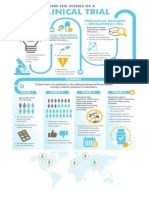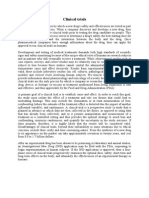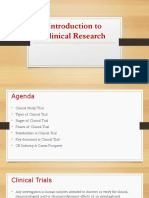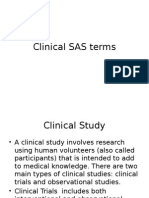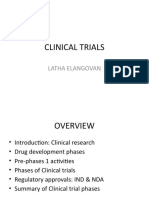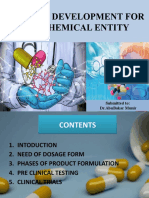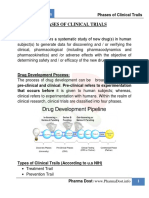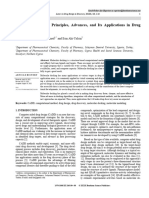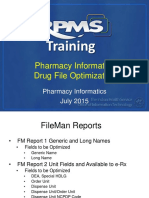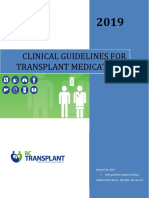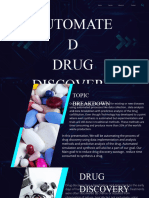0% found this document useful (0 votes)
28 views8 pagesClinical trials are essential for assessing the safety and efficacy of new drugs through a series of phases involving human subjects. Phase I focuses on safety with healthy volunteers, Phase II evaluates efficacy with a larger patient group, and Phase III involves extensive testing for effectiveness and adverse reactions before seeking FDA approval. Phase IV, or post-marketing surveillance, monitors long-term effects and cost-effectiveness after a drug is approved for sale.
Uploaded by
Raaj TilakCopyright
© © All Rights Reserved
We take content rights seriously. If you suspect this is your content, claim it here.
Available Formats
Download as PDF, TXT or read online on Scribd
0% found this document useful (0 votes)
28 views8 pagesClinical trials are essential for assessing the safety and efficacy of new drugs through a series of phases involving human subjects. Phase I focuses on safety with healthy volunteers, Phase II evaluates efficacy with a larger patient group, and Phase III involves extensive testing for effectiveness and adverse reactions before seeking FDA approval. Phase IV, or post-marketing surveillance, monitors long-term effects and cost-effectiveness after a drug is approved for sale.
Uploaded by
Raaj TilakCopyright
© © All Rights Reserved
We take content rights seriously. If you suspect this is your content, claim it here.
Available Formats
Download as PDF, TXT or read online on Scribd
/ 8




